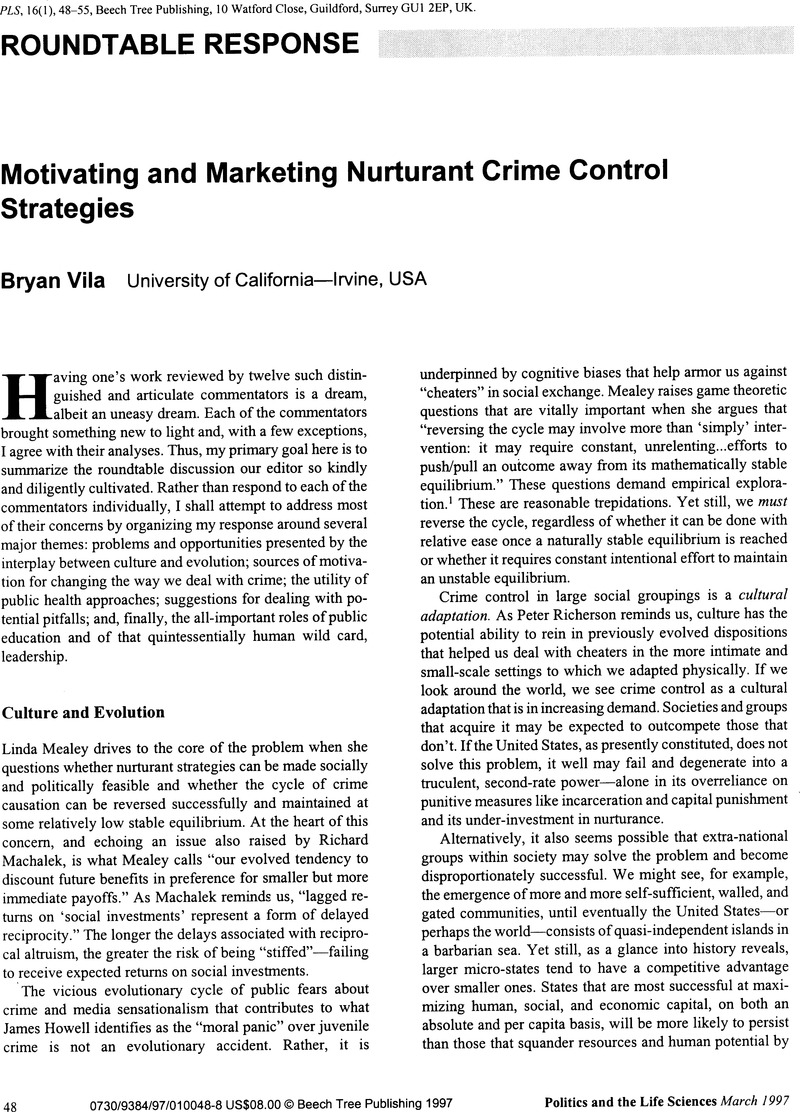Crossref Citations
This article has been cited by the following publications. This list is generated based on data provided by Crossref.
Vila, Bryan
1997.
Modifications Not Needed in the General Paradigm for Understanding Criminal Behavior.
Politics and the Life Sciences,
Vol. 16,
Issue. 2,
p.
315.
Savage, Joanne
and
Vila, Bryan
2002.
Changes in child welfare and subsequent crime rate trends.
Journal of Applied Developmental Psychology,
Vol. 23,
Issue. 1,
p.
51.
Vila, Bryan
and
Savage, Joanne
2011.
Criminologists on Terrorism and Homeland Security.
p.
66.





